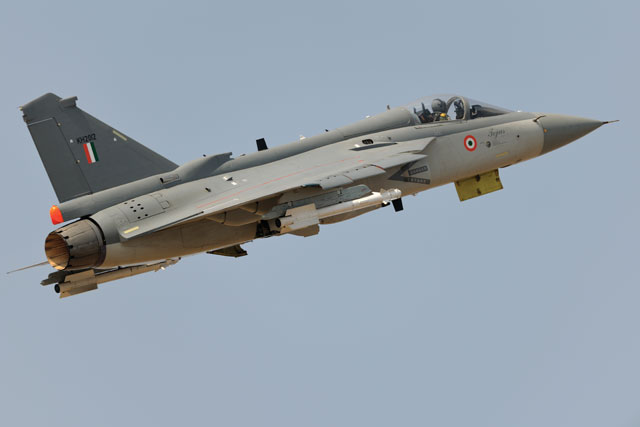One of India's largest information technology companies thinks it can adapt the software sector's on-site/offshore business model for the aerospace industry and leverage that growth to transform itself into a leading aircraft design and manufacturing house within a decade.
 |
|---|
HAL Tejas: painful development, but much gained |
But the group, headed by Ramaseshan Satagopan, is not without certain advantages. Being part of the $15 billion Mahindra Group is helpful. The company has grown rapidly over 15 years by becoming a builder and designer of automobiles for the Indian market.
OUTRAGEOUSLY AMBITIOUS
Now, the Mahindra Group's chairman, Anand Mahindra, has started looking for new growth opportunities - describing himself, according to India's Business Standard newspaper, as "outrageously ambitious to see Indian aerospace take its rightful place in the world".
Underscoring that ambition, Satagopan tells Flight International: "My chairman feels the next wave [of growth in India] will likely be in aerospace".
It is easy to understand why. India has to solve an infrastructure problem, but aircraft manufacturers still view the subcontinent's potential with awe.
In 2011, a total of 470 passenger aircraft were operated in South Asia. By 2031, Boeing expects airlines in the region will add 1,660 new aircraft, nearly quadrupling capacity during 20 years. Most of those new aircraft are expected to be delivered to India.
Mahindra Satyam is one of the Indian suppliers moving aggressively to prepare for what it considers a perfect growth opportunity. Like industries in other fast-growing countries, India is not content to be merely a consumer of Western aircraft. Instead, it hopes to leverage acquisitions to fuel the capability for indigenous production.
Satagopan realises this vision is not something realised overnight. "I need to take some baby steps," he says. "I need to prove [capabilities on] some sub-assemblies and some other things - manufacturing sub-assemblies and other things."
Mahindra Satyam has already taken the first such steps. Its speciality in the aerospace industry to date has been designing interior components for Western-built business jets, such as galley monuments.
In the past two years, however, it has reformed its billing process from requesting progress payments to receiving payment only after delivering a component. That has allowed the company to seek larger and more sophisticated work packages from US and European manufacturers.
"For one of the [OEMs] we are working on the design of part of the fuselage," Satagopan says. "That gives us the opportunity for developing other skill-sets and improving those skill-sets. It's a game-changer for us."
As Mahindra Satyam develops its offshore design business, it also hopes to become one of several emerging Indian aerospace contractors to expand via home-grown aircraft programmes. The Indian government has announced plans to develop a host of new aircraft, including fighters, unmanned aerial vehicles, trainers, transports and regional commercial aircraft.
"So you have huge programmes form the design and development side," Satagopan says. "Also there is a manufacturing capability that needs to be developed in order to produce those aircraft in this country. So I think there is a huge opportunity in the next 10 years."
In the near-term, Mahindra Satyam thinks the maintenance, repair and overhaul market in India lacks sufficient capacity, which could provide another growth opportunity, he says.
India's aerospace industry has long been dominated by only a few players, particularly Hindustan Aeronautics. However, the long and painful development of the Light Combat Aircraft programme helped to establish a small core of small and medium-sized aerospace enterprises.
Those companies are now being supplemented with deep-pocketed engineering organisations from other sectors across the nation, such as automotive and information technology in the case of Mahindra.
Source: Flight International
















